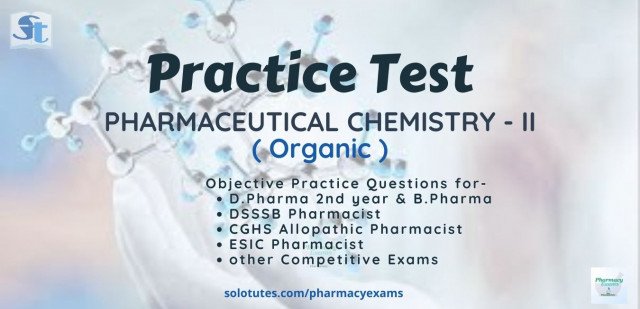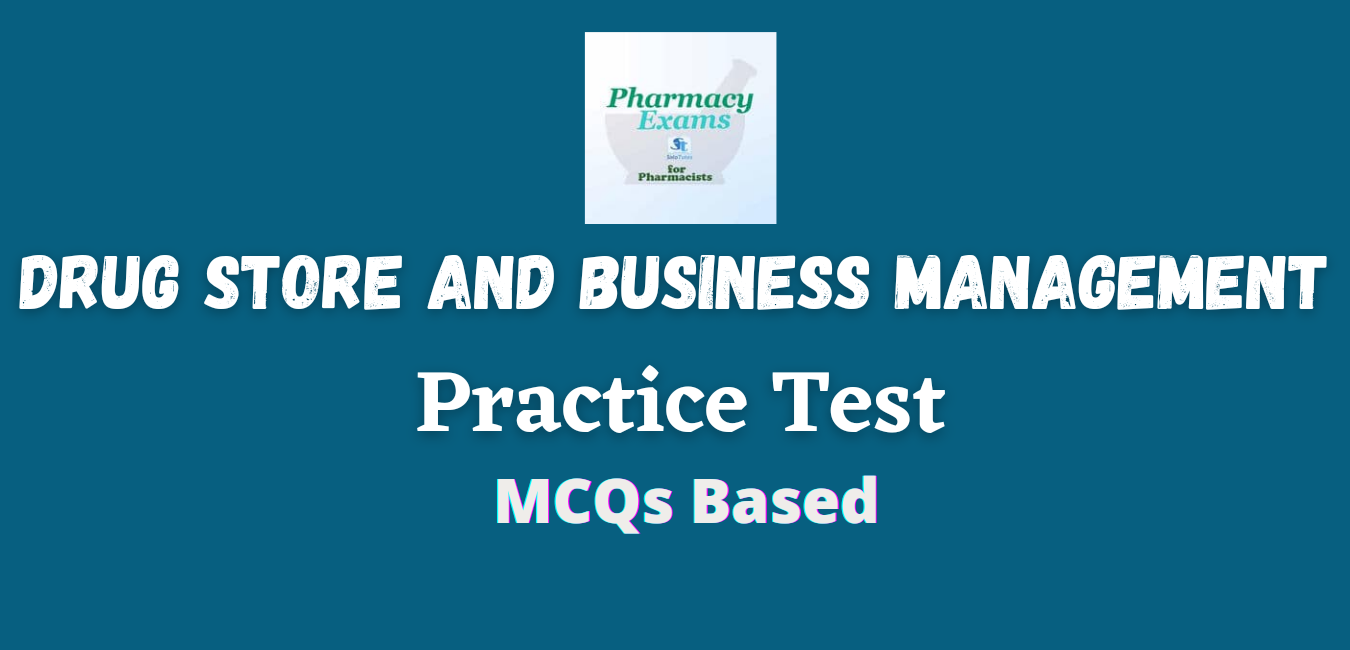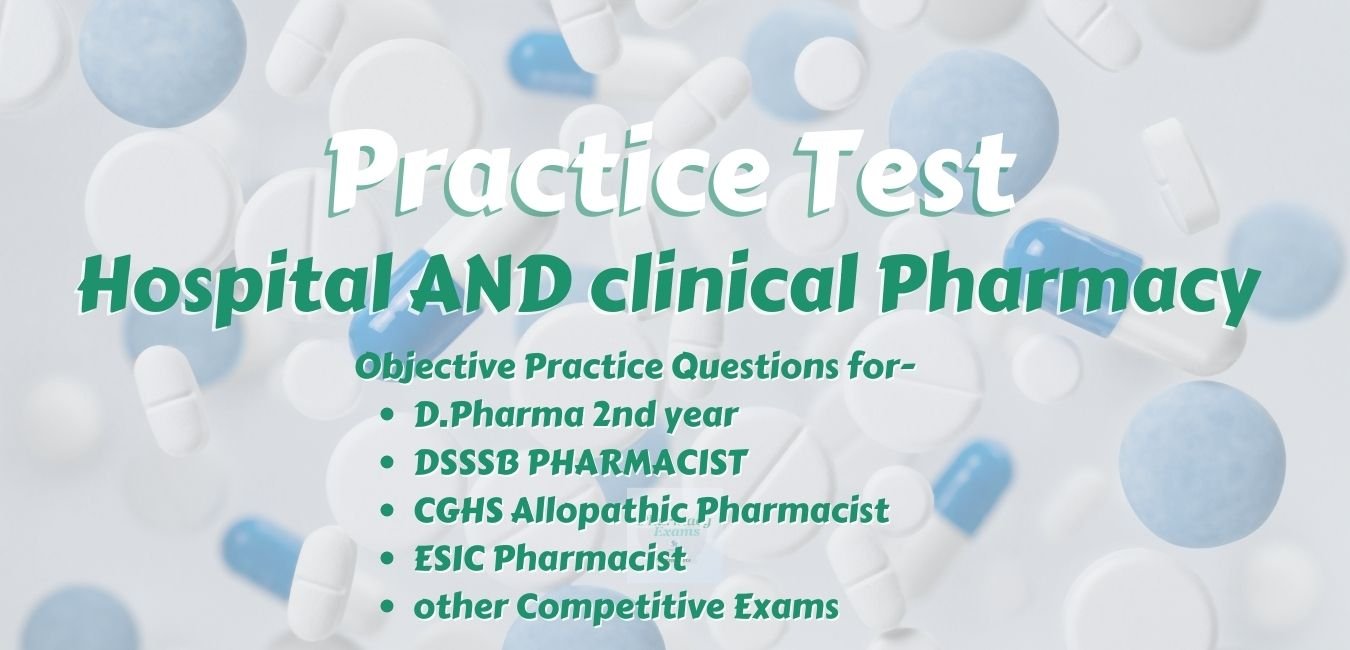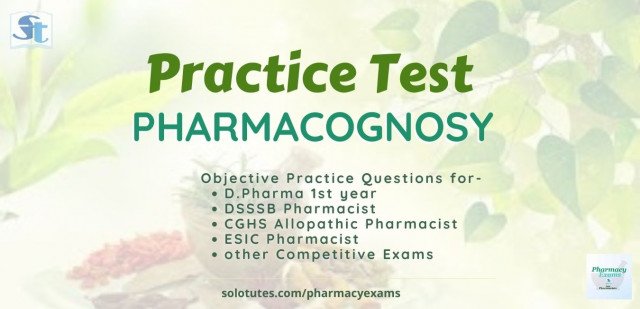
B. Pharma
A Bachelor of Pharmacy is an undergraduate academic degree in the field of pharmacy. It is the 4 years program course required for entry in master in Pharmacy Program and applying for various govt. jobs like Pharmacist, drug inspectors, drug controllers, drug store in charge etc.
Explore in B. Pharma
Chapters All ❱
![]() diksha bhatla
diksha bhatla
21 Jun 2022
INTRODUCTION TO HUMAN SKELETON
The human skeleton is the internal framework of the body. It is composed of 270 bones at birth. This total 206 ...
![]() diksha bhatla
diksha bhatla
20 Jun 2022
INTRODUCTION TO CARDIOVASCULAR SYSTEM The heart is muscular organ about the size of a closed fist located in the chest between the lungs behind th...
![]() diksha bhatla
diksha bhatla
9 Jun 2022
Inflammation is a critical homeostatic process that is activated by cellular injury regardless of the mechanism of that injury. ...
![]() diksha bhatla
diksha bhatla
3 Jun 2022
Cell injury is the common denominator in almost all diseases. It is defined as 'an alteration in cell structure or biochemical functioning, re...
![]() solotutes
solotutes
24 May 2021
Water and minerals are play major role in the processes of life. Minerals are divided into two types in human body 1. Principal elements (Macromineral...
pharmacy infoline
30 Nov -0001
histamine and antihistamine drugs...
Notes All ❱
![]() diksha bhatla
diksha bhatla
4 Jun 2022
Cell adaptation within limits: Most cells have the ability to adapt to changes in their environment by altering their morphology, pattern of growth ...
![]() diksha bhatla
diksha bhatla
4 Jun 2022
Cell injury is the common denominator in almost all diseases. It is defined as 'an alteration in cell structure or biochemical functioning, resulting ...
![]() diksha bhatla
diksha bhatla
2 Jun 2022
Homeostasis may be defined as “The maintenance of the internal conditions of the body at equilibrium, despite changes in the external environment”. ...
![]() solotutes
solotutes
12 Jun 2020
Some of drugs or chemicals are fatal to embryo development. Those drugs and chemical substances which produce deviations and abnormalities in the ...
![]() prakash joshi
prakash joshi
14 May 2021
Pharmaceutical containers are divided according to their utility i.e. well closed container for solid items for transportation, tightly closed conta...
![]() prakash joshi
prakash joshi
14 May 2021
Pharmaceutical containers are divided according to their utility i.e. well closed container for solid items for transportation, tightly closed conta...
pharmacy infoline
12 Jul 2021
Antihistamines are drugs which treat rhinitis and other allergies. Typically people take antihistamines as a cheap , generic, over-the-counter medicin...
One Liners All ❱
Caffeine
2 of 5 〉 Antineoplastic Agents which is specific tyrosine kinase receptor inhibitor that is used in the therapy of Philadelphia chromosome-positive chronic myelogenous leukemia and gastrointestinal stromal tumorsImatinib
3 more 👇
Germinoma
2 of 7 〉 cancer of skin that develops when melanocytes (the cells that give the skin its tan or brown color) start to grow out of control.Melanoma
5 more 👇
Mycoplasmas
2 of 11 〉 Branching filamentous bacteriaActinomycetes
9 more 👇
Practice (MCQs) All ❱
Question 1 of 106
Q.1 Containers meant for storage of injectables are made of
- Lime-soda glass
- Type II glass
- Neutral glass
- Type I and II glass
Answer ✔ (d) Type I and II glass
Question 2 of 106
Q.2 Air tight sealed containers are used for
- Tablets
- Injectables
- Capsules
- Liquid preparations
Answer ✔ (b) Injectables
Question 3 of 106
Q.3 Hydraulic resistance test is performed on glass in order to find out
- Mechanical strength
- Quality
- Alkali liberated by it
- Limit of Alkalinity liberated by it
Answer ✔ (d) Limit of Alkalinity liberated by it
Question 4 of 106
Q.4 Collapsible tubes made from lead is not used for pharmaceutical packaging due to
- Inferior metal
- Risk of lead poisoning
- Soft in nature
- Not good in appearance
Answer ✔ (b) Risk of lead poisoning
Question 5 of 106
Q.5 Ball Mills work on the principle of
- Impact
- Attrition
- Crushing
- Impact and attrition
Answer ✔ (d) Impact and attrition
Question 6 of 106
Q.6 The output of size reduction of material in a machine depends on
- Chemical nature
- Physical character
- Bulk density
- Material structure
Answer ✔ (c) Bulk density
Question 7 of 106
Q.7 Roller mill works on the principle of
- Impact
- Attrition
- Compression
- Compression and attrition
Answer ✔ (d) Compression and attrition
Question 8 of 106
Q.8 Give the name of the mill in which no wear occurs
- Ball mill
- Edge runner mill
- Fluid energy mill
- Roller mill
Answer ✔ (c) Fluid energy mill
Question 9 of 106
Q.9 The efficiency of a ball mill is maximum at
- Low speed
- 2/3rd of speed
- High speed
- Very high speed
Answer ✔ (b) 2/3rd of speed
Question 10 of 106
Q.10 Sulphur glass is prepared from soda glass by treating it's surface with -
- Sulphur
- Sulphur dioxide
- Sodium sulphate
- None of the above
Answer ✔ (b) Sulphur dioxide
Explanation: soda glass surface is treated with either Sulphur dioxide or ammonium sulphate to prepare sulphured glass.
Question 11 of 106
Q.1 Compared to subcutaneous injection, the intramus- cular injection of drugs:
- Is more painful
- Produces faster response
- Is unsuitable for depot preparations
- Carries greater risk of anaphylactic reaction
Answer ✔ (b) Produces faster response
Question 12 of 106
Q.2 The majority of drugs cross biological membranes primarily by
- Passive diffusion
- Facilitated diffusion
- Active transport
- Pinocytosis
Answer ✔ (a) Passive diffusion
Question 13 of 106
Q.3 Which of the following drugs is most likely to be absorbed from the stomach
- Hyoscine hydrobromide
- Morphine sulfate
- Diclofenac sodium
- Quinine dihydrochloride
Answer ✔ (c) Diclofenac sodium
Question 14 of 106
Q.4 The most important factor governing absorption of a drug from intact skin is
- Nature of the base used in the formulation
- Lipid solubility of the drug
- Molecular weight of the drug
- Site of application
Answer ✔ (b) Lipid solubility of the drug
Question 15 of 106
Q.5 Bioavailability differences among oral formulations of a drug are most likely to occur if the drug
- Undergoes little first-pass metabolism
- Is incompletely absorbed
- Is freely water soluble
- Is completely absorbed
Answer ✔ (b) Is incompletely absorbed
Question 16 of 106
Q.6 Marked redistribution is a feature of
- Highly plasma protein bound drugs
- Depot preparations
- Highly lipid soluble drugs
- Poorly lipid soluble drugs
Answer ✔ (c) Highly lipid soluble drugs
Question 17 of 106
Q.7 High plasma protein binding
- Increases volume of distribution of the drug
- Generally makes the drug long acting
- Facilitates glomerular filtration of the drug
- Minimises drug interactions
Answer ✔ (b) Generally makes the drug long acting
Question 18 of 106
Q.8 Which of the following is a prodrug
- Enalapril
- Menapril
- Thiazine
- Penicillin
Answer ✔ (a) Enalapril
Question 19 of 106
Q.9 Microsomal enzyme induction can be a cause of
- Tolerance
- Physical dependence
- Psychological dependence
- Idiosyncrasy
Answer ✔ (a) Tolerance
Question 20 of 106
Q.10 Glomerular filtration of a drug is affected by its
- Plasma protein binding
- Lipid solubility
- Degree of ionization
- Rate of tubular secretion
Answer ✔ (a) Plasma protein binding
Question 21 of 106
Q.1 Which of the following organs is innervated only by parasympathetic nerves
- Sweat glands
- Ciliary muscle
- Iris muscles
- Splenic capsule
Answer ✔ (b) Ciliary muscle
Question 22 of 106
Q.2 The following cotransmitter is most probably involved in mediating nonadrenergic-noncholinergic (NANC) relaxation of the gut
- Nitric oxide (NO)
- Adenosine
- Neuropeptide Y (NPY)
- Kallidin
Answer ✔ (d) Kallidin
Question 23 of 106
Q.3 The major postjunctional cholinergic receptor is of the muscarinic type at the following site
- Neuromuscular junction
- Postganglionic parasympathetic
- Adrenal medulla
- Autonomic ganglia
Answer ✔ (b) Postganglionic parasympathetic
Question 24 of 106
Q.4 The choline ester resistant to both true and pseudo- cholinesterase is
- Bethanechol
- Butyrylcholine
- Methacholine
- Benzoylcholine
Answer ✔ (a) Bethanechol
Question 25 of 106
Q.5 The smooth muscle structure that is relaxed by choli- nergic drugs is
- Colon
- Gastric fundus
- Bladder trigone
- Major bronchi
Answer ✔ (c) Bladder trigone
Question 26 of 106
Q.6 Pilocarpine is used for
- Glaucoma
- Paralytic ileus
- Urinary retention
- Infection
Answer ✔ (a) Glaucoma
Question 27 of 106
Q.7 The following inhibitor binds only to the ani-onic site of the cholinesterase enzyme
- Neostigmine
- Edrophonium
- Physostigmine
- Dyflos
Answer ✔ (b) Edrophonium
Question 28 of 106
Q.8 Reactivation of cholinesterase enzyme occurs on hydrolysis of the inhibitor by the same enzyme mole- cule in case of the following anticholinesterase
- Edrophonium
- Dyflos
- Tacrine
- Neostigmine
Answer ✔ (d) Neostigmine
Question 29 of 106
Q.9 Pyridostigmine differs from neostigmine in that
- It produces less muscarinic side effects
- It is more potent orally
- It is longer acting
- It does not have any direct action on NM receptor
Answer ✔ (c) It is longer acting
Question 30 of 106
Q.10 The site of action of miotics for therapeutic effect in angle closure glaucoma is
- Canal of Schlemm
- Ciliary body
- Ciliary muscle
- Sphincter pupillae muscle
Answer ✔ (d) Sphincter pupillae muscle
Question 31 of 106
Q.1 Labetalol differs from propranolol in that
- It has additional α1 blocking property
- It is a selective βS1 blocker
- It does not undergo first pass metabolism
- All of the above
Answer ✔ (a) It has additional α1 blocking property
Question 32 of 106
Q.2 Select the β-adrenergic blocker that has additional β1blocking, vasodilator and antioxidant properties
- Celiprolol
- Metoprolol
- Carvedilol
- Acebutolol
Answer ✔ (c) Carvedilol
Question 33 of 106
Q.3 Select the β adrenergic blocker that is primarily eliminated unchanged by renal excretion
- Atenolol
- Carbinol
- Ethanol
- Dompirol
Answer ✔ (a) Atenolol
Question 34 of 106
Q.4 Select the ultrashort acting cardioselective β adre- nergic blocker
- Carbinol
- Ethanol
- Esmolol
- Propalol
Answer ✔ (c) Esmolol
Question 35 of 106
Q.5 The following disease is worsened by propranolol
- Raynaud’s disease
- Infection
- Heart attack
- Epilepsy
Answer ✔ (a) Raynaud’s disease
Question 36 of 106
Q.6 Select the drug which is administered orally for erectile dysfunction in men
- Albendazole
- Mebendazole
- Cocaine
- Sildenafil
Answer ✔ (d) Sildenafil
Question 37 of 106
Q.7 Which of the following is a selective α1A receptor bloc- ker that affords symptomatic relief in benign prostatic hypertrophy without producing significant fall in blood pressure
- Doxazosin
- Alprostadil
- Tamsulosin
- Yohimbine
Answer ✔ (c) Tamsulosin
Question 38 of 106
Q.8 The bladder trigone and prostatic muscles are relaxed by
- Adrenergic α1 agonists
- Adrenergic α1 antagonists
- Adrenergic α2 antagonists
- Adrenergic α2 agonists
Answer ✔ (b) Adrenergic α1 antagonists
Question 39 of 106
Q.9 The drug which produces vasoconstriction despite being an α adrenergic blocker is
- Tolazoline
- Desmopressin
- Ergotamine
- Sildenafil
Answer ✔ (c) Ergotamine
Question 40 of 106
Q.10 While undergoing a surgical procedure a patient deve- lops hypotension. Which drug can be injected intramuscularly to raise his BP
- Noradrenaline
- Mephentermine
- Isoxsuprine
- Oxymetazoline
Answer ✔ (b) Mephentermine
Question 41 of 106
Q.1 Skin or bone is an example of what level of organization
- organ
- macromolecule
- cell
- tissue
Answer ✔ (a) organ
Question 42 of 106
Q.2 Which one of the following traits is not a characteristic of life shared by all organisms?
- growth
- circulation
- photosynthesis
- digestion
Answer ✔ (c) photosynthesis
Question 43 of 106
Q.3 Which of the following is the most complex level of organization?
- macromolecule
- organ
- organ system
- organelle
Answer ✔ (c) organ system
Question 44 of 106
Q.4 The ______________ of the body includes the head, neck, and trunk
- dorsal cavity
- axial portion
- appendicular portion
- ventral cavity
Answer ✔ (b) axial portion
Question 45 of 106
Q.5 The _____________ cavity is the portion enclosed by the pelvic bones
- abdominopelvic
- abdominal
- thoracic
- pelvic
Answer ✔ (d) pelvic
Question 46 of 106
Q.6 The lungs are covered by a membrane called the _____
- parietal pleura
- visceral pleura
- parietal pericardium
- peritoneum
Answer ✔ (b) visceral pleura
Question 47 of 106
Q.7 The ______________ system includes all the glands that secrete hormones.
- muscular
- endocrine
- nervous
- lymphatic
Answer ✔ (b) endocrine
Question 48 of 106
Q.8 A ______________ section divides the body into right and left portions.
- sagittal
- coronal
- transverse
- oblique
Answer ✔ (a) sagittal
Question 49 of 106
Q.9 Anatomy is a term that means the study of _____.
- physiology
- human functions
- morphology
- cell functions
Answer ✔ (c) morphology
Question 50 of 106
Q.10 A study dealing with the explanations of how an organ works would be an example of _____
- anatomy
- physiology
- cytology
- teleology
Answer ✔ (b) physiology
Question 51 of 106
Q.1 To identify the emulsion type, which of the following tests are conducted?
- Conductivity test
- Sedimentation test
- Tensile strength
- Bioadhesion
Answer ✔ (a) Conductivity test
Question 52 of 106
Q.2 Which of the following is not used as an emulsifying agent?
- Finely divided solids
- Surfactant
- Hydrophilic colloid
- Electrolytes
Answer ✔ (d) Electrolytes
Question 53 of 106
Q.3 Which of the following is not a semisolid dosage form?
- Cream
- Solution
- Paste
- Gel
Answer ✔ (b) Solution
Question 54 of 106
Q.4 Generally pastes contain
- Very low percentage of insoluble solids
- Low percentage of insoluble solids
- High percentage of insoluble solids
- soluble solids
Answer ✔ (c) High percentage of insoluble solids
Question 55 of 106
Q.5 In the preparation of vanishing creams, which types of bases are used generally?
- Water removable bases
- Absorption base
- Hydrocarbon base
- Oily base
Answer ✔ (a) Water removable bases
Question 56 of 106
Q.6 In the preparation of cold creams, which types of bases are used generally?
- Fatty base
- Hydrocarbon base
- Water removable bases
- Absorption base
Answer ✔ (d) Absorption base
Question 57 of 106
Q.7 Water soluble bases are also known as
- Greasy ointment bases
- Greaseless ointment bases
- Water removable base
- None of them
Answer ✔ (b) Greaseless ointment bases
Question 58 of 106
Q.8 A suppository is generally intended for use in
- Rectum
- Ear
- Nose
- Mouth
Answer ✔ (a) Rectum
Question 59 of 106
Q.9 .Vaginal suppositories also called as
- Simple suppositories
- Bougies
- Pessaries
- Soft tablet
Answer ✔ (c) Pessaries
Question 60 of 106
Q.10 Which of the following method is used to manufacture suppositories
- Compression molding
- Dissolution
- Sterilisation
- Disinfection
Answer ✔ (a) Compression molding
Question 61 of 106
Q.1 Who is the father of medicine………
- Luther
- Hippocrates
- Pastuer
- Bohr
Answer ✔ (b) Hippocrates
Question 62 of 106
Q.2 The first edition of IP was published in …
- 1955
- 1965
- 1975
- 1985
Answer ✔ (a) 1955
Question 63 of 106
Q.3 The seventh edition of IP was published in …
- 2011
- 2012
- 2013
- 2014
Answer ✔ (d) 2014
Question 64 of 106
Q.4 The “Pharmacy Act” came in force in ….
- 1947
- 1948
- 1949
- 1950
Answer ✔ (b) 1948
Question 65 of 106
Q.5 Pharmacy Council of India (PCI) was established in …..
- 1947
- 1948
- 1949
- 1950
Answer ✔ (c) 1949
Question 66 of 106
Q.6 What is USP?
- The United States Pharmacology
- The United States Pharmacopoeia
- The United States Pharmcy
- The United States Pharmacy Department
Answer ✔ (b) The United States Pharmacopoeia
Question 67 of 106
Q.7 Drugs converted to suitable form are known as
- Dosage form
- Excipients
- API
- Diluents
Answer ✔ (a) Dosage form
Question 68 of 106
Q.8 Simple syrup is a saturated solution of…
- Fructose
- Mannose
- Glucose
- Sucrose
Answer ✔ (d) Sucrose
Question 69 of 106
Q.9 When two or more drugs are used in combination to increase the pharmacological action, the phenomenon is known as ………
- Potentisation
- Combination
- Synergism
- Antagonism
Answer ✔ (c) Synergism
Question 70 of 106
Q.10 When the action of the drug is opposed by the other drug, the the phenomenon is known as
- Antagonism
- Synergism
- Opposition
- Potentisation
Answer ✔ (a) Antagonism
Question 71 of 106
Q.1 Which of the following is a function of the skeletal system?
- haemopoiesis
- haemostasis
- peristalsis
- glycogenolysis
Answer ✔ (a) haemopoiesis
Question 72 of 106
Q.2 In which of the following bone structures do osteocytes live?
- canaliculi
- osteons
- lacunae
- lamellae
Answer ✔ (c) lacunae
Question 73 of 106
Q.3 Which bone is most superior?
- cervical vertebra
- patella
- manubrium
- occipital bone
Answer ✔ (d) occipital bone
Question 74 of 106
Q.4 What is a “trochanter”?
- projection that forms part of an articulation
- part of a femur
- groove in which lies a tendon
- a feature of the pelvis
Answer ✔ (b) part of a femur
Question 75 of 106
Q.5 One of the functions of bones is to make red blood cells. What is this process known as?
- Haemopoiesis
- Haematuria
- Haemostasis
- Haemolysis
Answer ✔ (a) Haemopoiesis
Question 76 of 106
Q.6 Where do osteocytes reside?
- In lamellae
- In lacunae
- In trabeculae
- In endosteum
Answer ✔ (b) In lacunae
Question 77 of 106
Q.7 Which one of the following is a bone that is embedded within a tendon?
- hyoid
- sesamoid
- sphenoid
- ethmoid
Answer ✔ (b) sesamoid
Question 78 of 106
Q.8 Which bone of the head has a synovial joint?
- The mandible
- The sphenoid
- The maxilla
- The hyoid
Answer ✔ (a) The mandible
Question 79 of 106
Q.9 What are the bones of the fingers known as?
- carpals
- phalanges
- short bones
- metacarpals
Answer ✔ (b) phalanges
Question 80 of 106
Q.10 Which of the following comprise seven bones?
- Cranial bones
- Carpals
- Lumbar vertebrae
- Cervical vertebrae
Answer ✔ (d) Cervical vertebrae
Question 81 of 106
Q.1 The process occurring in the presence of oxygen is called… ..
- Anaerobic
- Aerobic
- Glycogenic
- Microaerophilic
Answer ✔ (a) Anaerobic
Explanation:
Question 82 of 106
Q.2 The process occuring in the absence of oxygen is called… .
- Anaerobic
- Aerobic
- Glycogenic
- Microaerophilic
Answer ✔ (a) Anaerobic
Explanation:
Question 83 of 106
Q.3 Enzymatic hydrolysis of major nutrients in GIT to yield their simpler components is .....
- Fermentation
- Deglutition
- Glycolysis
- Digestion
Answer ✔ (d) Digestion
Question 84 of 106
Q.4 Amino acids with carbon chains that can be metabolically converted into glucose or glycogen are called… .
- Metagenic amino acids
- Glucogenic amino acids
- Ketogenic amino acids
- Glutamic amino acids
Answer ✔ (b) Glucogenic amino acids
Question 85 of 106
Q.5 Amino acids with carbon chains that can be metabolically converted into ketone bodies are called… .
- Metagenic amino acids
- Glucogenic amino acids
- Ketogenic amino acids
- Glutamic amino acids
Answer ✔ (c) Ketogenic amino acids
Question 86 of 106
Q.6 The water soluble fuels which are overproduced during fasting or in untreated diabetes mellitus are called… . .
- Melanin bodies
- Ketone bodies
- Glucose bodies
- Citrate bodies
Answer ✔ (b) Ketone bodies
Question 87 of 106
Q.7 Energy yielding anaerobic breakdown of glucose yielding lactate, ethanol with some other products is… . ..
- Protein fermentation
- Fat metabolism
- Glucose fermentation
- Nucleic acid fermentation
Answer ✔ (a) Protein fermentation
Question 88 of 106
Q.8 The biosynthesis of carbohydrates from simpler, non carbohydrate precursors is… . .
- Gluconeogenesis
- Glycogenolysis
- Thermogenesis
- Glycogenesis
Answer ✔ (a) Gluconeogenesis
Question 89 of 106
Q.9 An oxidative pathway of glucose-6-phosphate is also known as…
- Phosphogluconate pathway
- Pentose phosphate pathway
- Hexose monophosphate pathway
- All of them
Answer ✔ (d) All of them
Question 90 of 106
Q.10 The process of breakdown of glycogen to blood glucose is … . .
- Gluconeogenesis
- Glycogenesis
- Thermogenesis
- Glycogenolysis
Answer ✔ (d) Glycogenolysis
Question 91 of 106
Q.1 The process of converting glucose to glycogen for storage is…
- Glycogenolysis
- Thermogenesis
- Glycogenesis
- Gluconeogenesis
Answer ✔ (c) Glycogenesis
Question 92 of 106
Q.2 The catabolic pathway by which a molecule of glucose is broken down into two molecules of pyruvate is ..
- Glycogenolysis
- Gluconeogenesis
- Glycolysis
- Thermogenesis
Answer ✔ (c) Glycolysis
Question 93 of 106
Q.3 What is glycolysis?
- synthesis of glycogen
- breakdown of glycogen
- synthesis of glucose
- Utilization of glucose
Answer ✔ (d) Utilization of glucose
Question 94 of 106
Q.4 Where does glycolysis occur?
- Cytosol
- Mitochondria
- Nucleus
- Ribosomes
Answer ✔ (a) Cytosol
Question 95 of 106
Q.5 Glycolysis occurs in …. cells
- Plant
- Animals
- Eukaryotic
- All of them
Answer ✔ (a) Plant
Question 96 of 106
Q.6 Oxidation of glucose for energy production is… ..
- Gluconeogenesis
- Glycogenolysis
- Thermogenesis
- Glycolysis
Answer ✔ (d) Glycolysis
Question 97 of 106
Q.7 Glycolysis is the conversion of
- Fructose into phosphoenolpyruvate
- Fructose into pyruvate
- Glucose into phosphoenolpyruvate
- Glucose into pyruvate
Answer ✔ (d) Glucose into pyruvate
Question 98 of 106
Q.8 Glycolysis is also known as?
- Embden Meyerhof pathway
- HMP-shun
- Respiratory cycle
- Kreb’s cycle
Answer ✔ (a) Embden Meyerhof pathway
Question 99 of 106
Q.9 EMP stands for …
- Embden Meyerhof & parulekar
- Emmoline Meyerhof & parnas
- Embden Meyerhof & parnas
- Embden Meyerhof & parnar
Answer ✔ (c) Embden Meyerhof & parnas
Question 100 of 106
Q.10 In the EMP pathway, the steps involved are ……
- Energy generation phase
- Energy investment phase
- Splitting phase
- All of them
Answer ✔ (d) All of them
Question 101 of 106
Q.1 The following are excreted faster in basicurine
- Weak acids
- Strong acids
- Weak Bases
- None of the above
Answer ✔ (a) Weak acids
Explanation:
Question 102 of 106
Q.2 A good example of chemical antagonism
- Heparin & Protamine
- Protamine & Zinc
- Heparin & Prothrombin
- All the above
Answer ✔ (a) Heparin & Protamine
Explanation: Chemical antagonism does not involve any receptors. Protamine is a positively charged protein at physiological pH and thus antagonizes the effects of Heparin which is negatively charged at physiological pH.
Question 103 of 106
Q.3 Active transport differs from facilitated transport in following ways, except
- Carrier is involved
- It is against concentration gradient
- Energy is required
- All of the above
Answer ✔ (a) Carrier is involved
Explanation: Facilitated diffusion differs from active transport in that it does not require energy source and it carries the transport in the direction of electrochemical gradient.
Question 104 of 106
Q.4 Acidic drugs mainly bind to plasma
- Albumin
- acid glycoprotein
- Weak acids
- Heparin & Protamine
Answer ✔ (a) Albumin
Explanation: Glycoprotein binds to basic drugs and albumin binds to many acidic drugs and a small number of basic drugs.
Question 105 of 106
Q.5 _______ is expressed in both the intestinal epithelium and the kidney.
- CYP378A
- CYP4B2
- CYP3A4
- CYP256
Answer ✔ (a) CYP378A
Explanation: CYP3A4 is involved in the metabolism of majority of drugs and is also expressed extrahepatically. In fact, poor bioavailability of many drugs is attributed to the drug metabolism by CYP3A4 in gastrointestinal tract.
Question 106 of 106
Q.6 N-oxidation will be involved with the metabolism of following drugs, except
- Dapsone
- Meperidine
- Phenytoin
- Chlorpheniramine
Answer ✔ (c) Phenytoin
Explanation: N-oxidation is involved in the metabolism of dapsone, meperidine and chloramphenicol. Metabolism of phenytoin involves oxidative Ndealkylation.
Practice Tests All ❱
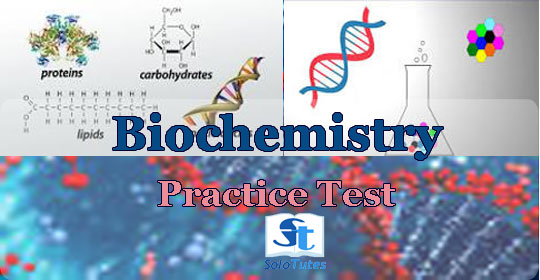
Biochemistry Test Series | Practice Set 5 | Revision MCQs for Pharmacy and Medical Exams
(25 Questions , 53 attempts)

Biochemistry Test Series | Practice Set 3 | Revision MCQs for pharmacy and medical exams
(25 Questions , 24 attempts)
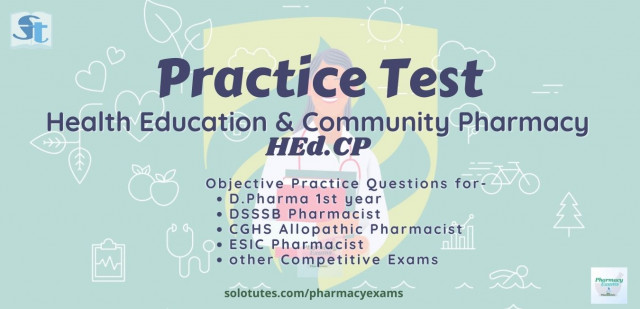
Health Education Practice Test #1 | H.E.C.P. MCQs for Pharmacy Exams
(20 Questions , 67 attempts)

Online Practice Test for Pharmacy exams, previous Year questions
(50 Questions , 2716 attempts)
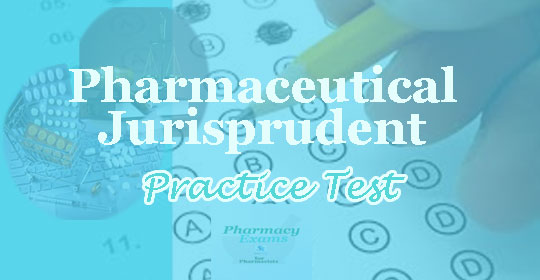
Pharmaceutical Jurisprudence Practice test #2 for Pharmacy Exams
(25 Questions , 456 attempts)
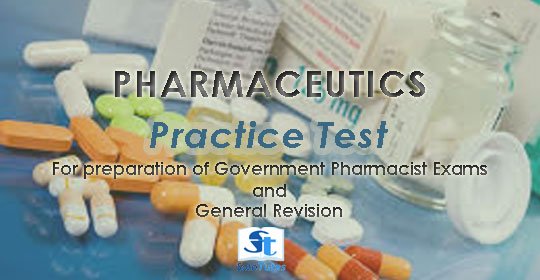
Practice Test #2 | Pharmaceutics-II | MCQs for Pharmacy Exams
(30 Questions , 581 attempts)
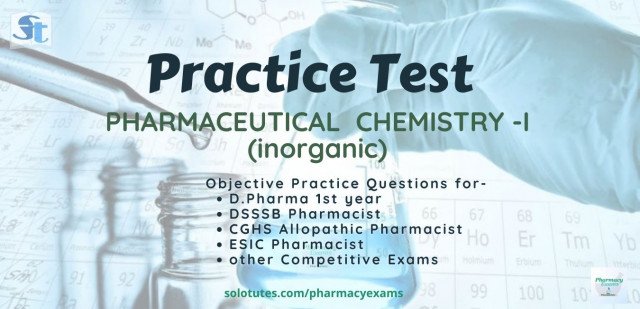
Practice Test Set #1 | Pharmaceutical Chemistry 1 (inorganic) MCQs
(30 Questions , 385 attempts)
.png)

